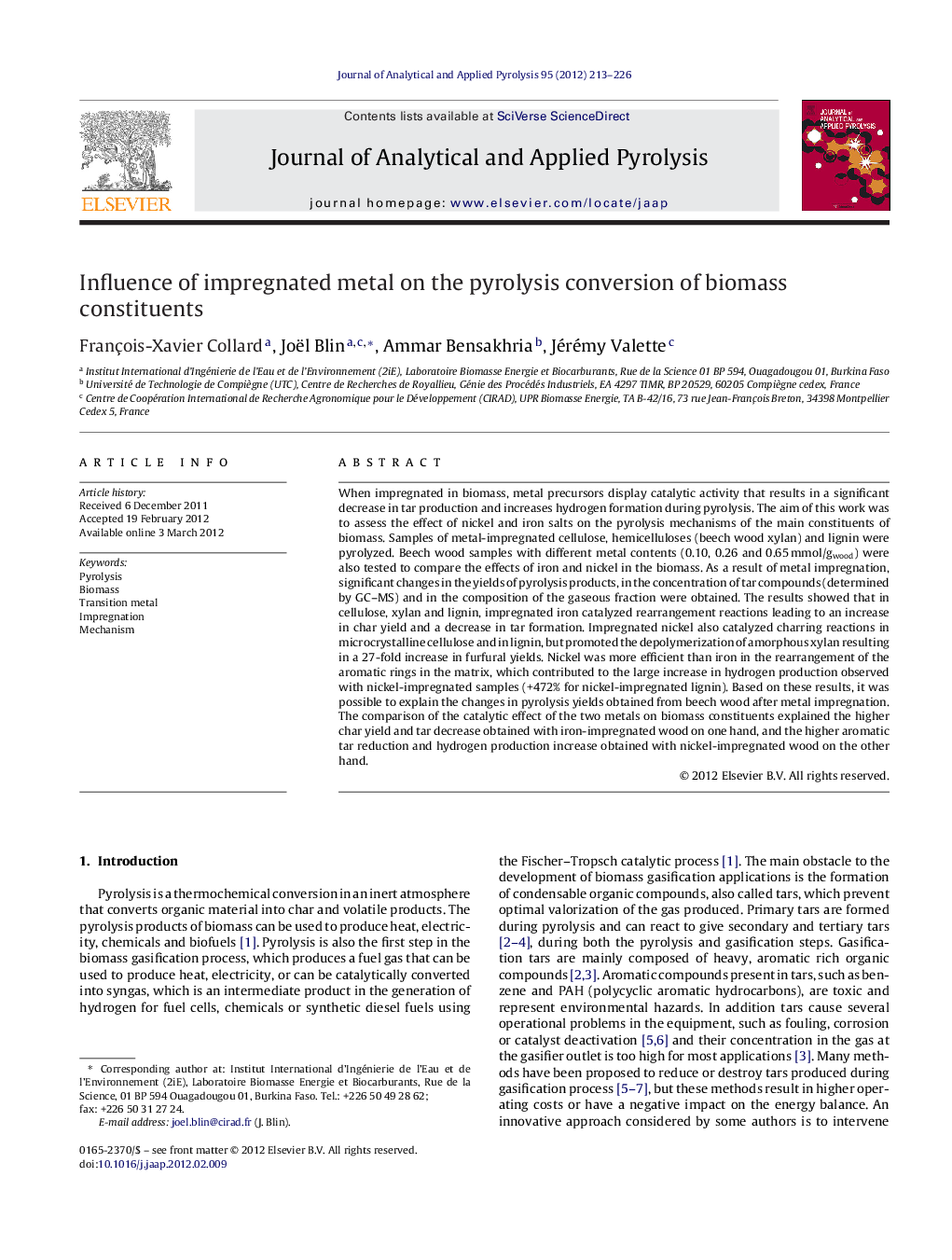| Article ID | Journal | Published Year | Pages | File Type |
|---|---|---|---|---|
| 1197404 | Journal of Analytical and Applied Pyrolysis | 2012 | 14 Pages |
When impregnated in biomass, metal precursors display catalytic activity that results in a significant decrease in tar production and increases hydrogen formation during pyrolysis. The aim of this work was to assess the effect of nickel and iron salts on the pyrolysis mechanisms of the main constituents of biomass. Samples of metal-impregnated cellulose, hemicelluloses (beech wood xylan) and lignin were pyrolyzed. Beech wood samples with different metal contents (0.10, 0.26 and 0.65 mmol/gwood) were also tested to compare the effects of iron and nickel in the biomass. As a result of metal impregnation, significant changes in the yields of pyrolysis products, in the concentration of tar compounds (determined by GC–MS) and in the composition of the gaseous fraction were obtained. The results showed that in cellulose, xylan and lignin, impregnated iron catalyzed rearrangement reactions leading to an increase in char yield and a decrease in tar formation. Impregnated nickel also catalyzed charring reactions in microcrystalline cellulose and in lignin, but promoted the depolymerization of amorphous xylan resulting in a 27-fold increase in furfural yields. Nickel was more efficient than iron in the rearrangement of the aromatic rings in the matrix, which contributed to the large increase in hydrogen production observed with nickel-impregnated samples (+472% for nickel-impregnated lignin). Based on these results, it was possible to explain the changes in pyrolysis yields obtained from beech wood after metal impregnation. The comparison of the catalytic effect of the two metals on biomass constituents explained the higher char yield and tar decrease obtained with iron-impregnated wood on one hand, and the higher aromatic tar reduction and hydrogen production increase obtained with nickel-impregnated wood on the other hand.
► Influence of transition metal impregnation on pyrolysis of cellulose, hemicelluloses and lignin. ► Ni and Fe impregnation led to significant changes in the composition of tar and gas fraction. ► Hypotheses to explain which catalyzed pathway led to the changes in pyrolysis yield. ► Pyrolysis yields of metal impregnated wood are explained based on the constituent results. ► Catalytic effect of Ni depends on the structure (crystalline or amorphous) of the polysaccharide.
